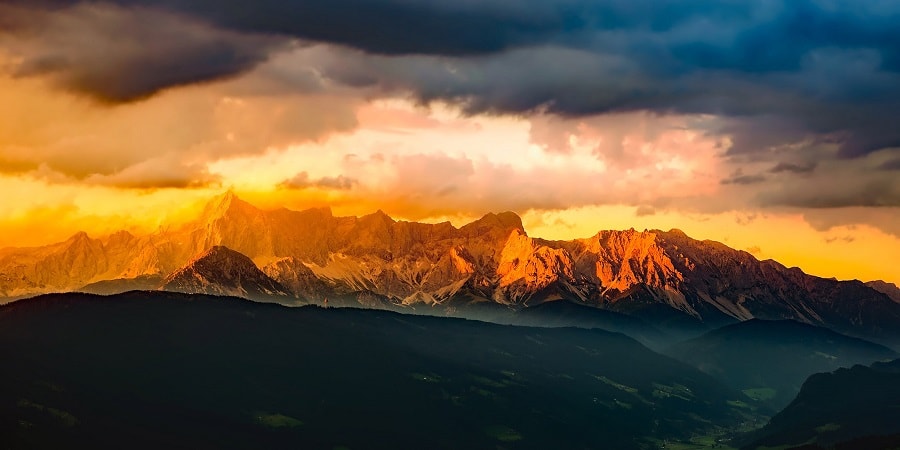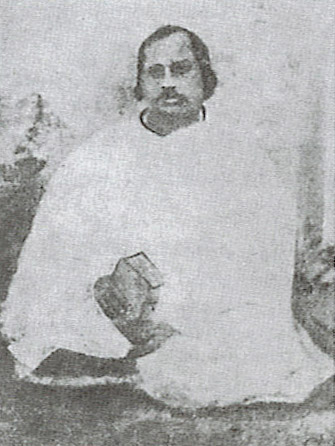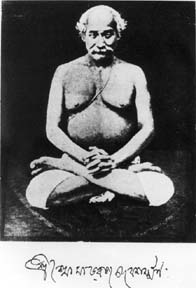Translated and edited from the original Bengali and Sanskrit into English for the first time by Swami Satyeswarananda Giri and set in 4 volumes in hard cover. Available in set, US$250.00 + postage and handling $14.00, CA residents please add tax 8%.
The Gitas and Sanghitas (Volume 1), 2006, ISBN 10: 1-877854-36-0
- The Bhagavad Gita,
- The Guru Gita,
- The Omkar Gita,
- The Abadhut Gita,
- The Kabir Gita,
- The Manu Sanghita,
- The Astabakra Sanghita, and
- The Charaka Sanghita.
The Chandi and the Others (Volume 2), 2006, ISBN 10: 1-877854-37-9
- The Chandi,
- The Yantrasar,
- The Tantrasar,
- The Linga Purana,
- Ancient Yogi Panini on Education,
- The Kabir Doha (Couplets), and
- The Japaji (The First Book of Guru Nanak).
The Upanisads (Volume 3), 2006, ISBN 10: 1-877854-44-1
- The Tejabindu Upanisad,
- The Dhyanabindu Upanisad,
- The Amritabindu Upanisad,
- The Niralamba Upanisad, and
- The Taitiriya Upanisad.
The Six Systems (Volume 4), 2006, ISBN 10: 1-877854-45-X
- The Sankhya Sutras,
- The Yoga Sutras,
- The Nyaya Sutras,
- The Vaisesika Sutras,
- The Mimangsa Darsan, and
- The Vedanta Darsan.
Yogiraj Sri Sri Lahiri Mahasay and His 108 Pieces of Advice
Lahiri Mahasay’s tenure of biological life was from the 7th day of Apar paksa, or the Other Fortnight, or the Pitri paksa, the Paternal Fortnight of the lunar circle of 1221 Bangabda (Bengali Year) to the 8th day of Matri paksa, the Maternal Fortnight of 1288 Bangabda (Bengali Year).
According to the English calendar, it was from September, 1828, through October, 1895.
He chose specially the exceedingly holy hour of Mahasandhiskan, the great union period to leave the body.
This is how the original Kriya practitioners in India select Lahiri Mahasay’s birthdate and the date of his leaving the body.
In his diary, an entry was found which started: “Birthdate not exactly known.” In accordance with the family tradition, the long parchment document of his thikuji, the birthdate and life’s chart, was destroyed after his leaving the body. As a result, it was difficult to ascertain his birthdate. However, his only bachelor grandson out of eight grandsons, Ananda Mohan Lahiri, after making a thorough research of family documents came to the conclusion that his grandfather’s birthdate fell on the seventh day of Apar paksa, the Other Fortnight, or the Pitri Paksa, the Paternal Fortnight of the lunar circle of 1221 Bangabda (Bengali Year). Since then, the Original Kriya practitioners have accepted that day and observed his birthdate accordingly. The date of his leaving the body was certain: the 8th day of Matri paksa, called Mahastami or Birastami day.
It may be mentioned here that some people observed his birthdate according to the English calendar of that year 1828 which fell on September 28 on that particular year. But according to the Vedic Sanskrit calendar, as stated above, the Pitri paksa, Paternal Fortnight, and Matri Paksa, Maternal Fortnight, vary in time. As a result, Lahiri Mahasay’s birthdate and the date of his leaving the body into Mahasamadhi also vary.
Then there is the thirteen and a half hours time difference with India, which is ahead of the United States time. In case any Kriyanwit (male) / Kriyanwita (female), practitioner of Kriya should want to observe these in accordance with the time of India, he/she must adjust the time.
Lahiri Mahasay’s Divine Gurudev, Mahamuni Babaji, remains enigmatic. No information of his birthdate is possible to ascertain. He does not give out any picture of himself. There is no picture of him at all, although some devotee imagines to have his picture or photo. There is no bar for a devotional person imagining that; however, one must understand that imagination is subjective and is not real in the objective sense and is not for others.
According to information available to Swami Satyeswarananda Giri Babaji Maharaj obtained while he was living with Mahamuni Babaji at Dunagiri Hill, Himalayas, at the request of Lahiri Mahasay, Mahamuni Babaji Maharaj permitted Lahiri Mahasay to give his photo to his disciple, Gangadhar Babu; that is why we have Lahiri Mahasay’s photo.
Produced here is the only photo of Lahiri Mahasay in black and white (original).
Once, Lahiri Mahasay commented to a devotee about his photo, “If you believe it is Bhagavan (the Lord) then it is, if you don’t believe this then it is a mere picture.”
The mystery behind this comment was that Babaji gave his permission to Lahiri Mahasay at the latter’s request; and through this permission, Babaji also gave his own photo to the world. As Babaji was in Oneness with Lahiri Mahasay, Babaji gave his photo through Lahiri Mahasay. Interestingly enough, Babaji also looked like Lahiri Mahasay except that he has long hair, a beard and looks a bit younger.


